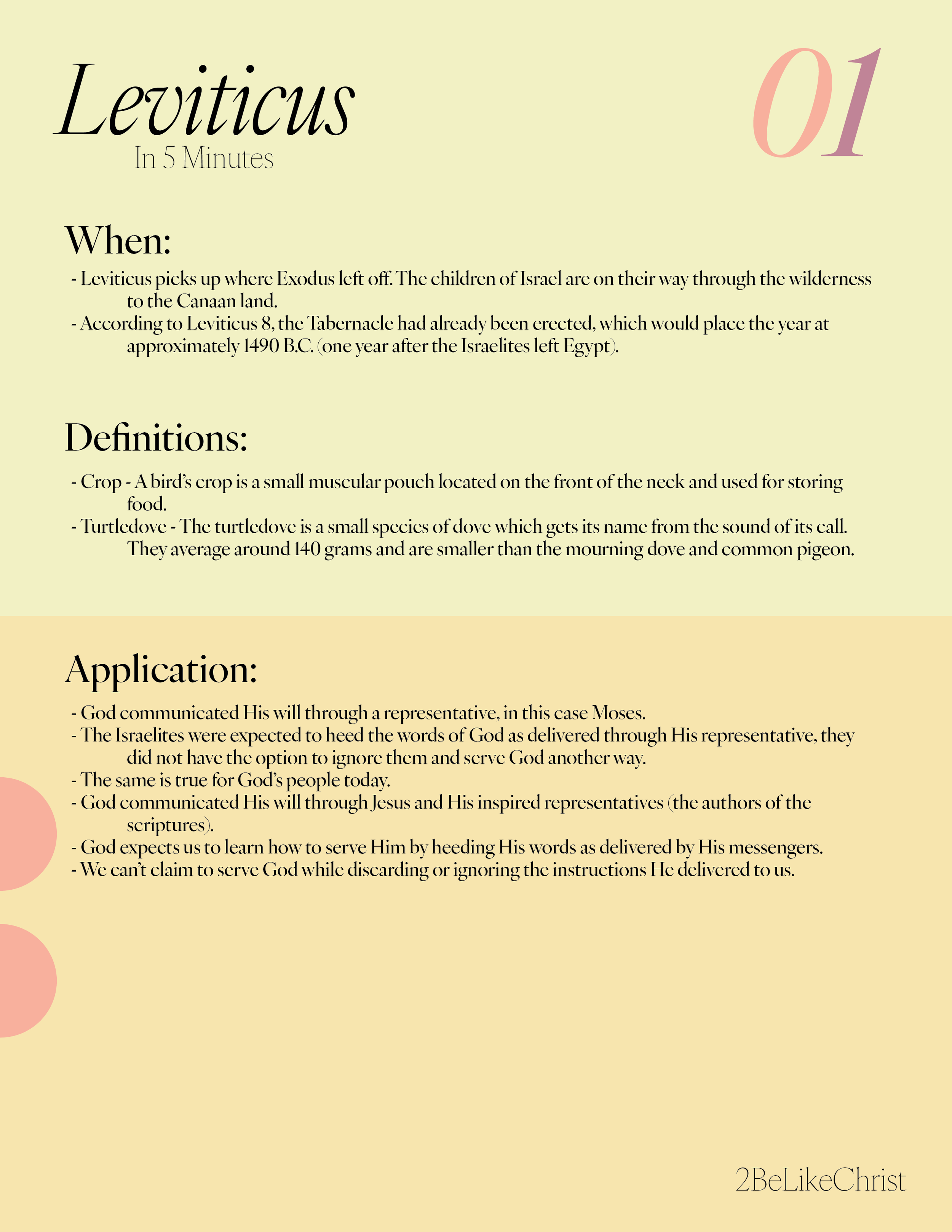Leviticus 1 Summary: A Short Breakdown in 5 Minutes
Leviticus 1 Summary - A Quick Overview
WHEN:
Leviticus picks up where Exodus left off. The children of Israel are on their way through the wilderness to the Canaan land.
According to Leviticus 8, the Tabernacle had already been erected, which would place the year at approximately 1490 B.C. (one year after the Israelites left Egypt).
DEFINITIONS:
Crop - A bird’s crop is a small muscular pouch located on the front of the neck and used for storing food.
Turtledove - The turtledove is a small species of dove which gets its name from the sound of its call. They average around 140 grams and are smaller than the mourning dove and common pigeon.
TABERNACLE DIAGRAM
OUTLINE:
GOD INSTRUCTS MOSES ON BURNT SACRIFICES (1:1-2):
God called Moses to the Tabernacle (Tent of Meeting) and gave him instructions for how the Israelites were supposed to offer sacrifices.
They could either bring an offering from their herd or from their flock.
INSTRUCTIONS FOR OFFERING OXEN (1:3-9):
If an Israelite wanted to offer an ox to the Lord, he was to bring a male ox without blemish to the entrance of the Tabernacle.
After placing his hand on the ox’s head, the sacrificer was to kill the ox.
The priests were to take the blood and throw it against the bronze altar.
Then the one offering the animal was to skin it and cut it in pieces.
After washing the entrails and the legs, the pieces were to be arranged on wood on the altar and burned.
The offerings went up to heaven as a “pleasing aroma” to the Lord.
INSTRUCTIONS FOR OFFERING SHEEP AND GOATS (1:10-13):
If an Israelite man wanted to offer a goat or a sheep, he was to bring the animal to the Tabernacle and kill it on the north side of the bronze altar.
The priests were to take the blood and throw it against the sides of the altar.
The animal was then to be chopped into pieces and, after its legs and entrails were washed, burned with wood on the altar as “a food offering with a pleasing aroma to the Lord.”
INSTRUCTIONS FOR OFFERING BIRDS (1:14-17):
In addition to goats, sheep, and oxen, the Israelites could offer turtledoves and pigeons.
If a bird offering was brought to the priests, the priests were to wring off the bird’s head and drain its blood on the side of the altar.
The bird’s crop was to be removed and thrown with the ashes on the east side of the altar.
The priest was then to tear the bird open by its wings (but not sever it) and burn it on the altar as a “food offering with a pleasing aroma” to the Lord.
APPLICATION:
God communicated His will through a representative, in this case Moses.
The Israelites were expected to heed the words of God as delivered through His representative, they did not have the option to ignore them and serve God another way.
The same is true for God’s people today.
God communicated His will through Jesus and His inspired representatives (the authors of the scriptures).
God expects us to learn how to serve Him by heeding His words as delivered by His messengers.
We can’t claim to serve God while discarding or ignoring the instructions He delivered to us.


